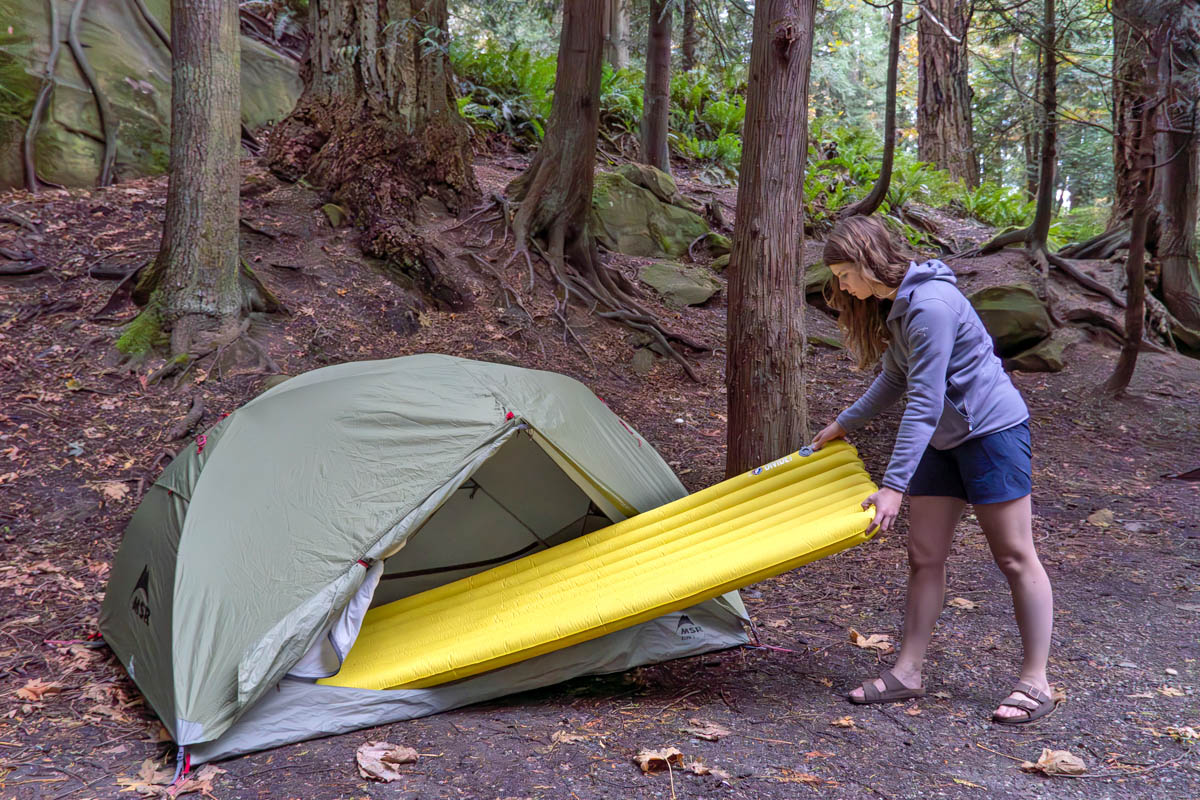
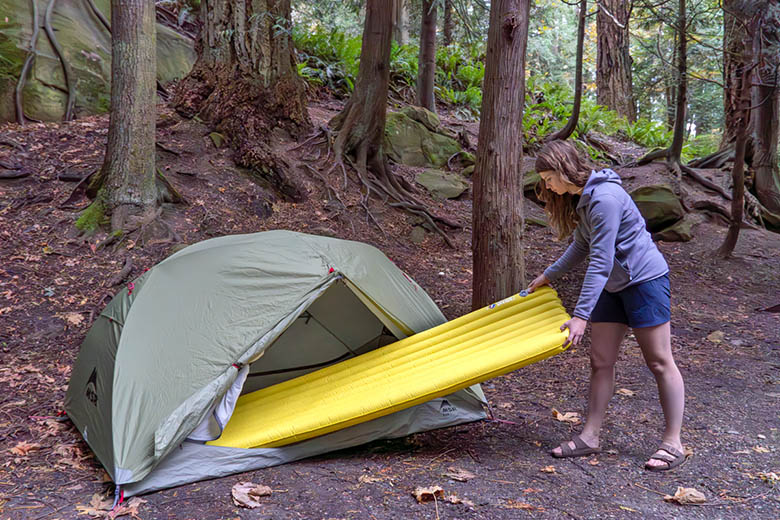
Switchback Travel (Maddie Downie)


Switchback Travel (Maddie Downie)
Price: $150 (Long Wide)
Dimensions: 78 x 25 x 3.5 in.
Weight: 2 lb. 2.5 oz.
What we like: A comfortable and durable 3-season pad at a competitive price.
What we don't: On the heavier and bulkier end, difficult to stuff down, and not our favorite pump sack design.
See the Big Agnes Divide Insulated
Big Agnes is well known in the backpacking space for their quality take on everything from ultralight tents to sleep systems. Built for 3-season backpacking, the Divide Insulated Sleeping Pad is no exception, offering solid comfort and durability at a competitively low price. I tested the Long Wide version on a range of outdoor adventures, from backpacking 20 miles into Washington's Pasayten Wilderness to quick weekend overnights, and found a lot to like with the pad. It's on the heavier and bulkier end for weight-conscious missions and not particularly easy to stuff down for storage, but overall performance is solid for the price. Below are my thoughts on the Divide Insulated Pad. To see how it stacks up to the competition, check out our article on the best backpacking sleeping pads.
I tested the Long Wide version of the Big Agnes Divide Insulated, which measures 78 inches long by 25 inches wide. At 6'3", I had no trouble fitting on the pad with some room to spare. What's more, the generous 3.5 inches of thickness provided ample cushion between me and the ground. I also found the vertical baffles to be very comfortable, effectively keeping me centered in the middle of the pad throughout the night. Whether I was sleeping on my back or side, the level of support remained consistent, and I woke up each morning feeling well rested and ache-free.
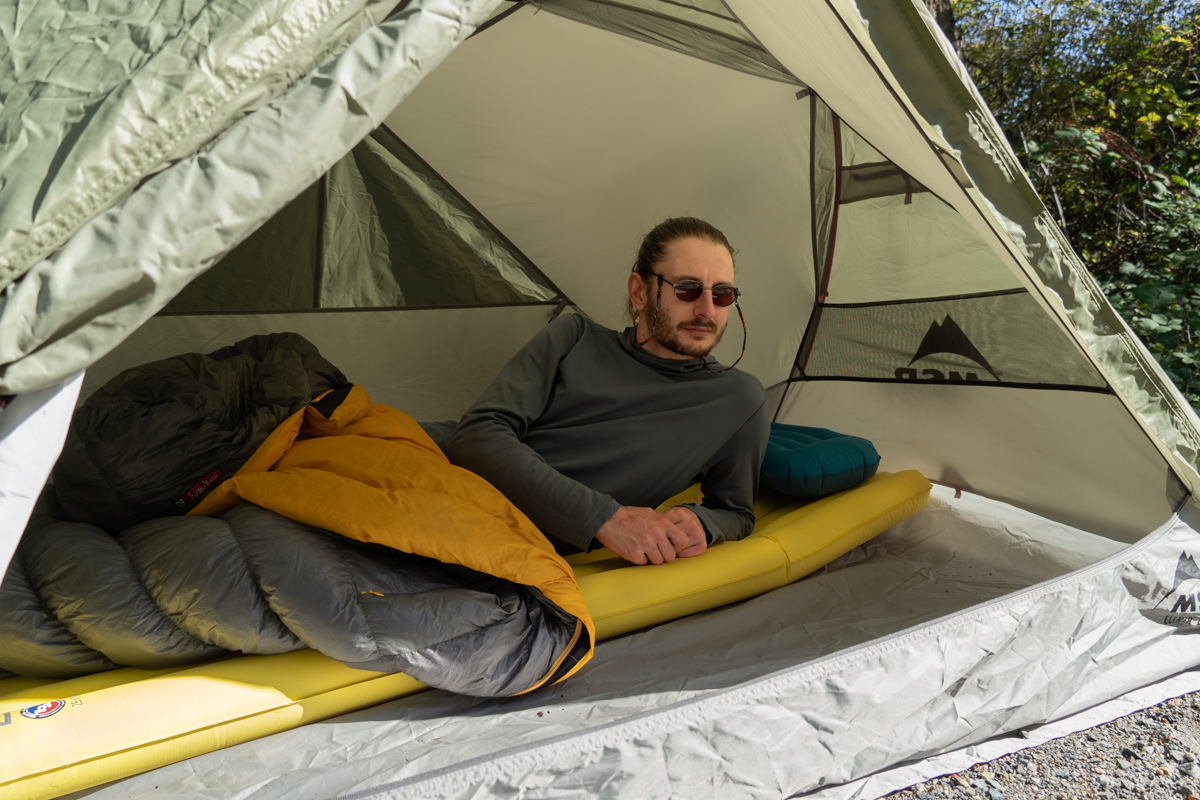
Camping at just under 7,500 feet of elevation in Washington’s Pasayten Wilderness in July didn't exactly demand a cold-weather setup, but conditions weren't your typical summer fare, either (there was still a decent amount of snow in shady areas). During my three nights, temperatures hovered just below 40 degrees Fahrenheit, and the Divide's R-value of 4.0 was a nice match for the cooler weather. For reference, I paired the pad with my Feathered Friends Swallow UL 20-degree sleeping bag and quickly realized it was overkill. Most nights, I found myself draping the bag over me, leaving my body exposed to the pad to cool off. Those expecting true wintertime temperatures may want to step up to a pad with an R-value of 5 or higher, but the Divide Insulated is well suited for 3-season backpacking (for more on ideal pad warmth, check out our article on Sleeping Pad R-Value Explained).
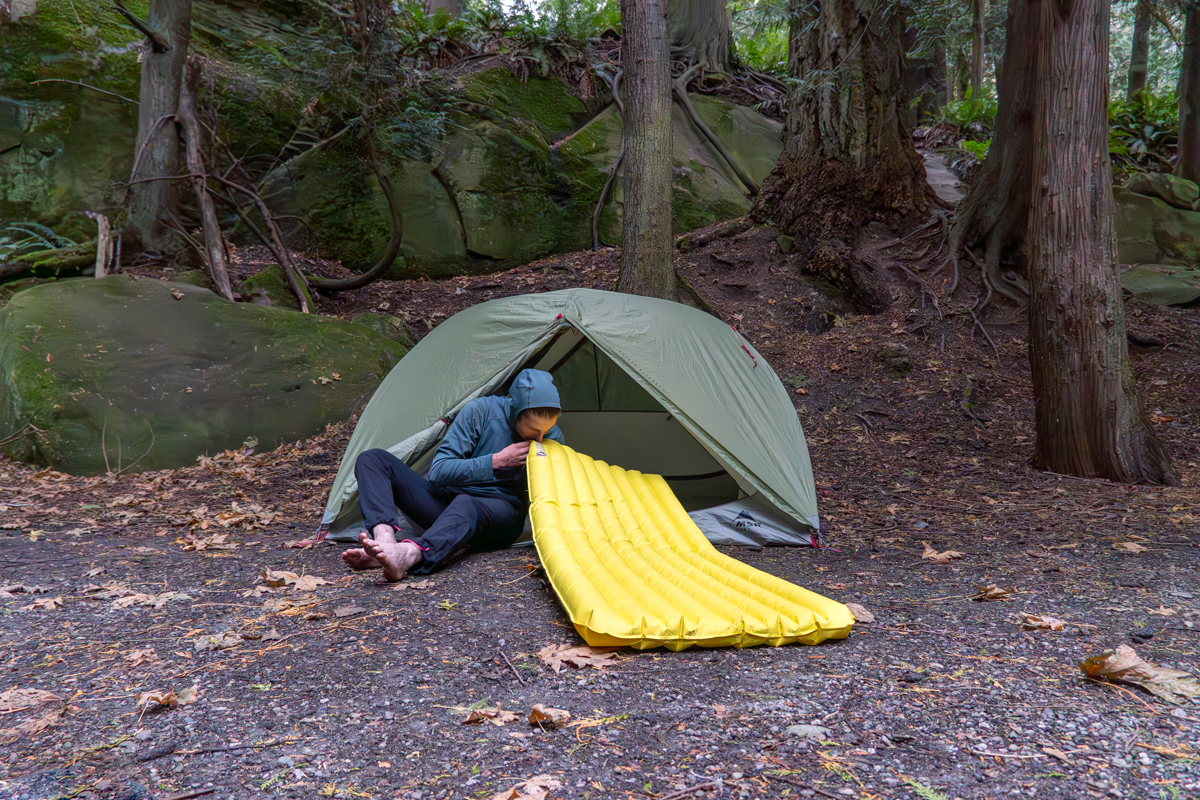
The Long Wide version of the Divide Insulated clocked in at 2 pounds 2.5 ounces on my scale, which is 1.5 ounces heavier than the brand's listed weight for that size (the "Regular" 72 x 20-in. model is 1 lb. 7 oz.). For comparison, Therm-a-Rest's NeoAir XLite NXT checks in over a pound lighter than the Divide at 1 pound 1 ounce for the Large version (77 x 25 x 3 in.), while Nemo's Tensor All-Season Ultralight is 1 pound 7 ounces for the Long Wide model (76 x 25 x 3.5 in.) and has a winter-ready R-value of 5.4. For shorter backpacking trips, the Divide's added weight may not be a dealbreaker, but its heft was noticeable during a 20-mile approach to Cathedral Peak.
Packability is another area where the Divide Insulated falls short. I found it challenging to stuff the pad into its included stuff sack, and most mornings required two or three tries to get it right. Even after I managed to pack it down, cinching the stuff sack closed was a struggle. For reference, Big Agnes lists the pad's packed size as 9 by 5.5 inches for the Long Wide size (8 x 5 in. for the regular), but I measured it slightly larger at 10 by 5.5 inches. As a result, the pad took up a good amount of space in my backpacking pack, which is important to consider if you're trying to streamline your load.
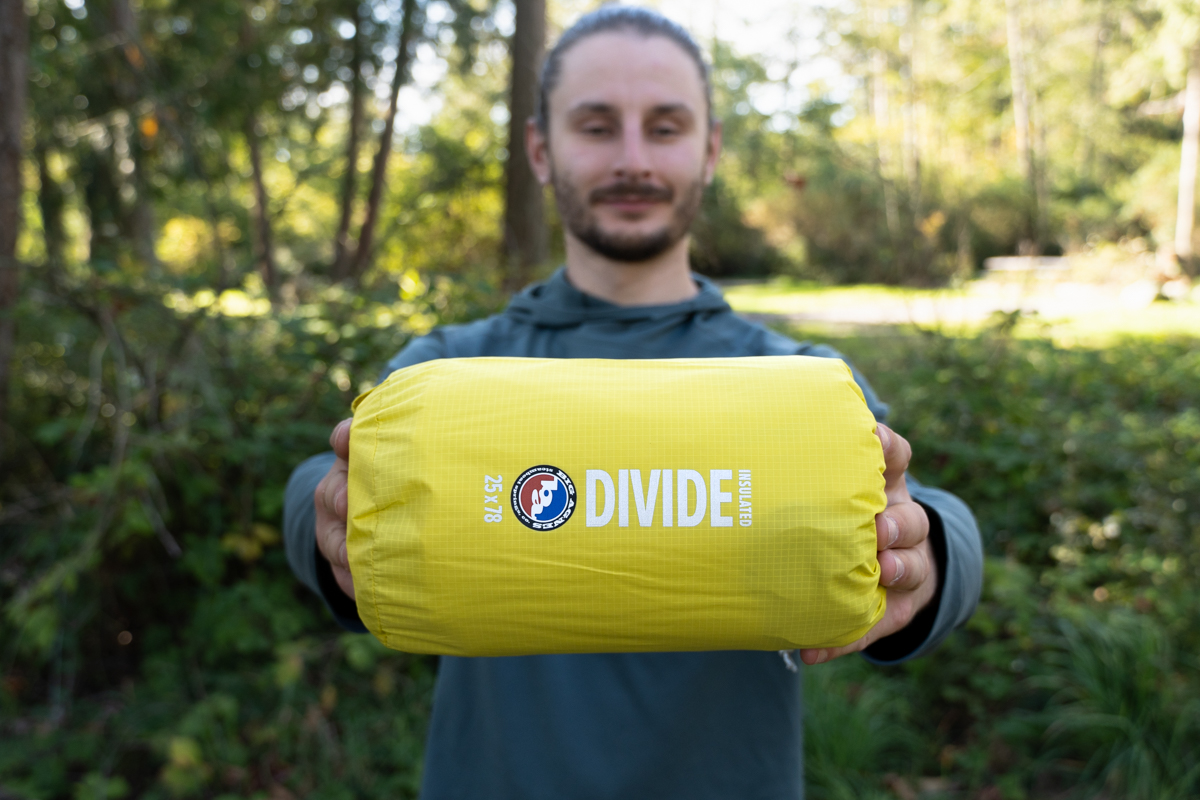
I found the Divide to be a bit of a hassle when it came to inflation, too. The included pump sack leaves a lot to be desired—it simply doesn't catch air as effectively as more premium designs. At best, I could inflate the pad about halfway before resorting to manual inflation, which proved to be easier and quicker. For comparison, I inflated the Divide alongside Sea to Summit's Ether Light XT, and the difference was notable. The Ether Light—though a smaller pad— took less than three minutes to fully inflate with its pump sack, while the Divide took up to 15 minutes (or less if blown up manually).
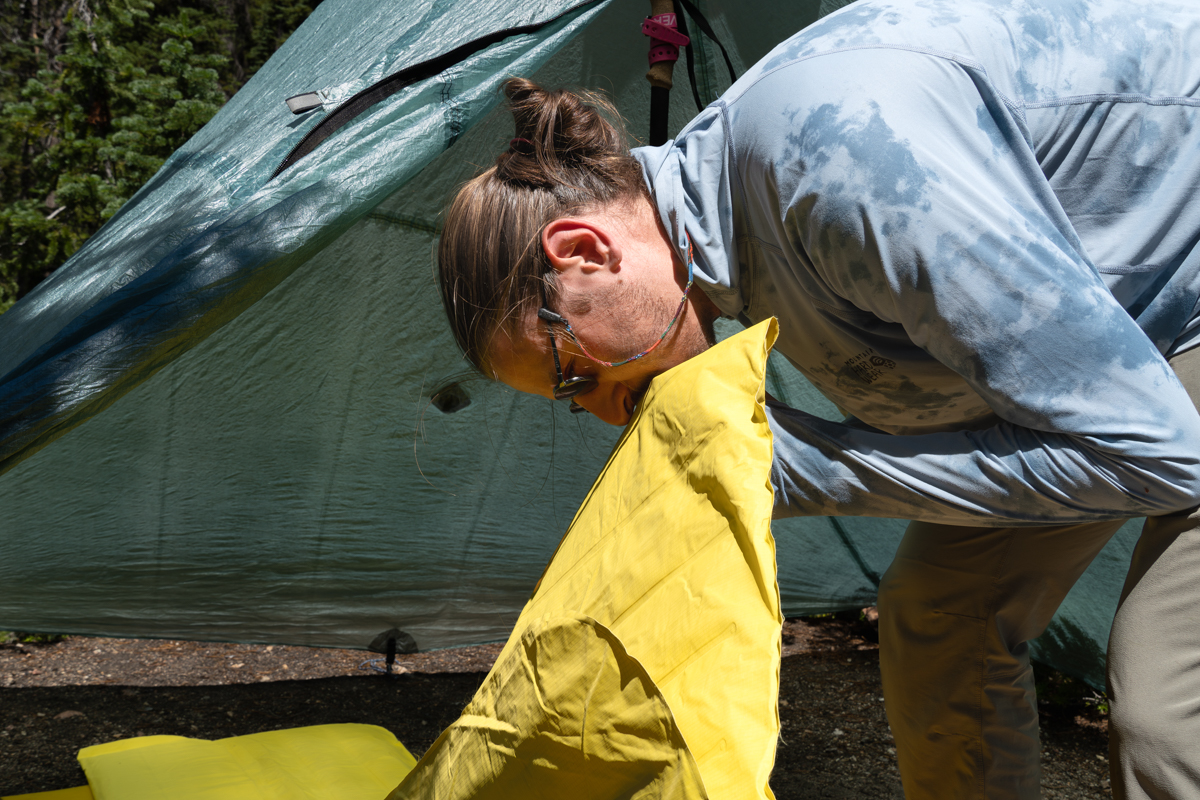
Deflating the Big Agnes Divide Insulated was fairly straightforward thanks to its two-valve system. However, the placement of the valves off to one side (rather than at the end of the pad) made it tricky to fully expel all the air. I often found that a small pocket of air would get trapped at the very end when rolling it up, requiring a few extra adjustments before it was ready to be packed away.
For a budget-friendly sleeping pad, the Divide Insulated is surprisingly durable. Although Big Agnes doesn't list the denier of the fabric to denote thickness, the ripstop nylon material has proven to be impressively resilient and abrasion-resistant. While camping at Cathedral Lakes, my pad was exposed to some rugged terrain, including sharp sticks and abrasive granite—we even bivvied directly on a rock slab one night. With only a thin foam sheet beneath it, the pad had little protection from the ground but held up remarkably well. Even after taking it on several car camping and weekend overnight trips all over western Washington, the only noticeable wear is some minor fraying at the seams.
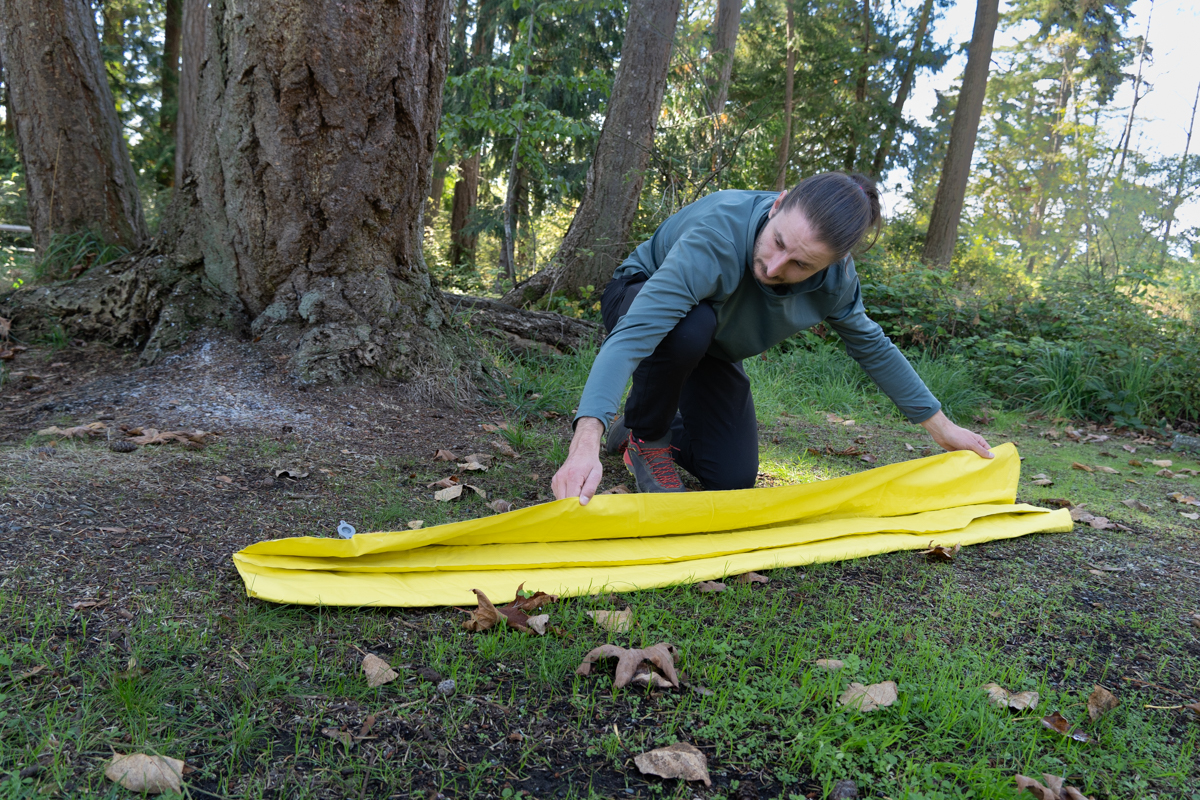
At $150 for the Long Wide version ($120 for the regular model), the Divide Insulated is a solid all-around value. For reference, it undercuts much of the competition by a significant margin—up to $100 in some cases. For instance, Therm-a-Rest’s NeoAir XLite NTX (which sits at the top of our sleeping pad round-up) runs $210 for the regular size and $240 for the comparable Large. While there are cheaper pads available, the Divide strikes a solid balance between performance and affordability. It's a great choice for those new to backpacking or anyone who prioritizes comfort at camp over shaving ounces on the trail. However, for backpackers looking to tackle longer, more demanding trips, upgrading to a lighter and more premium pad may be worth the added investment.
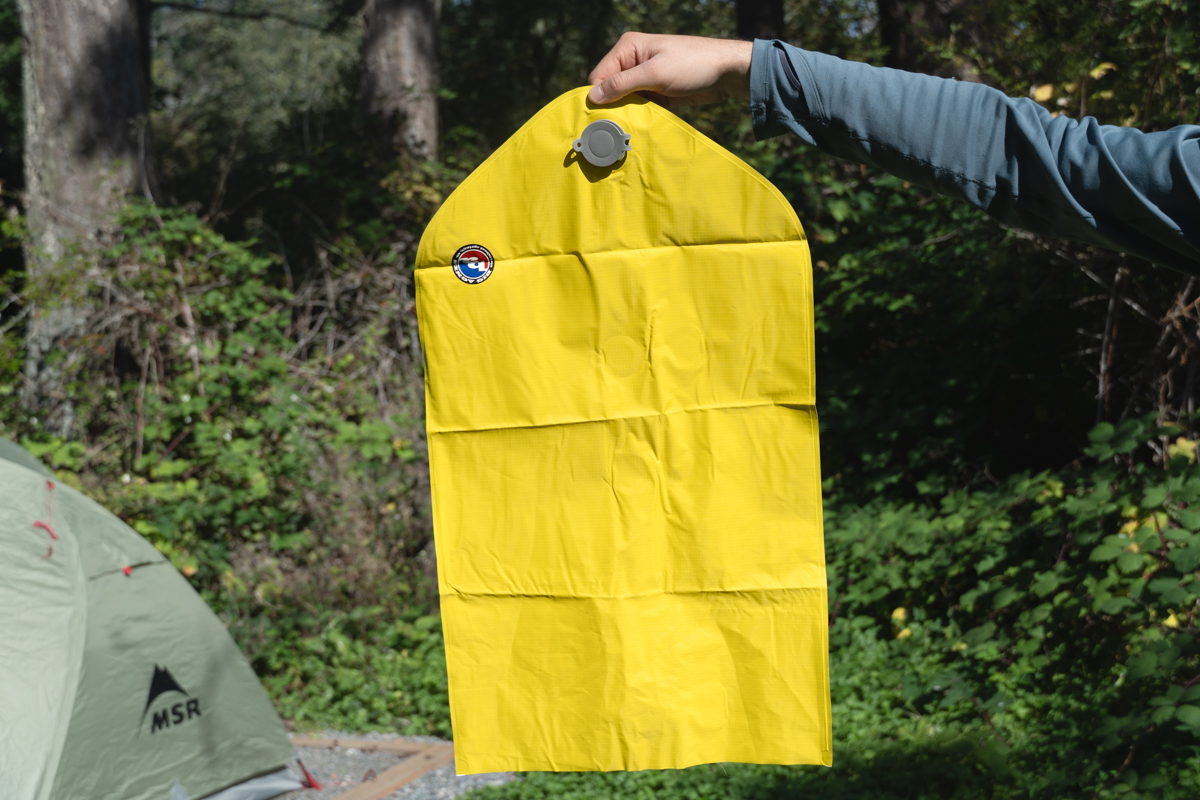
We appreciate when companies go the extra mile to create more sustainably built products, and Big Agnes has done a nice job employing eco-friendlier materials of late. In this case, the Divide Insulated uses recycled nylon to reduce the pad's overall impact. We'd love to see the use of bluesign-approved materials and/or a Fair Trade certification in future updates, but we nevertheless appreciate the brand's ongoing efforts.
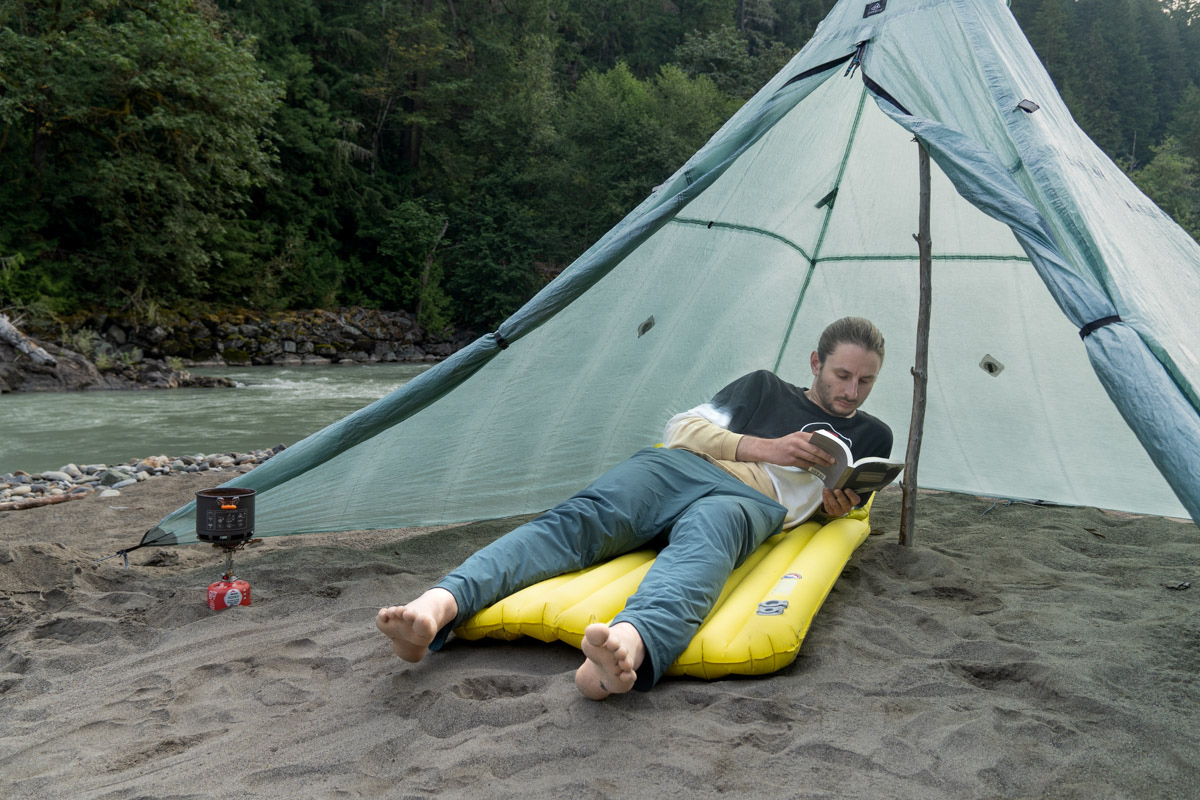
In addition to the Long Wide version I tested, the Divide Insulated is available in four other sizes. The regular model measures 72 by 20 inches, while the Petite is slightly shorter at 66 by 20 inches. For those who need more width, the Regular Wide size comes in at 72 by 25 inches, and the Double is a sprawling 78 by 50 inches. All models share the same 3.5-inch thickness, 4.0 R-value, and bright yellow colorway, with prices ranging from $120 for the regular and Petite models up to $250 for the double-wide version. Additionally, Big Agnes offers a non-insulated version of the Divide for $90 to $120 depending on size, which is significantly lighter (1 lb. 3 oz. for the regular) and features a lower R-value (1.5) that's better suited for summertime trips.
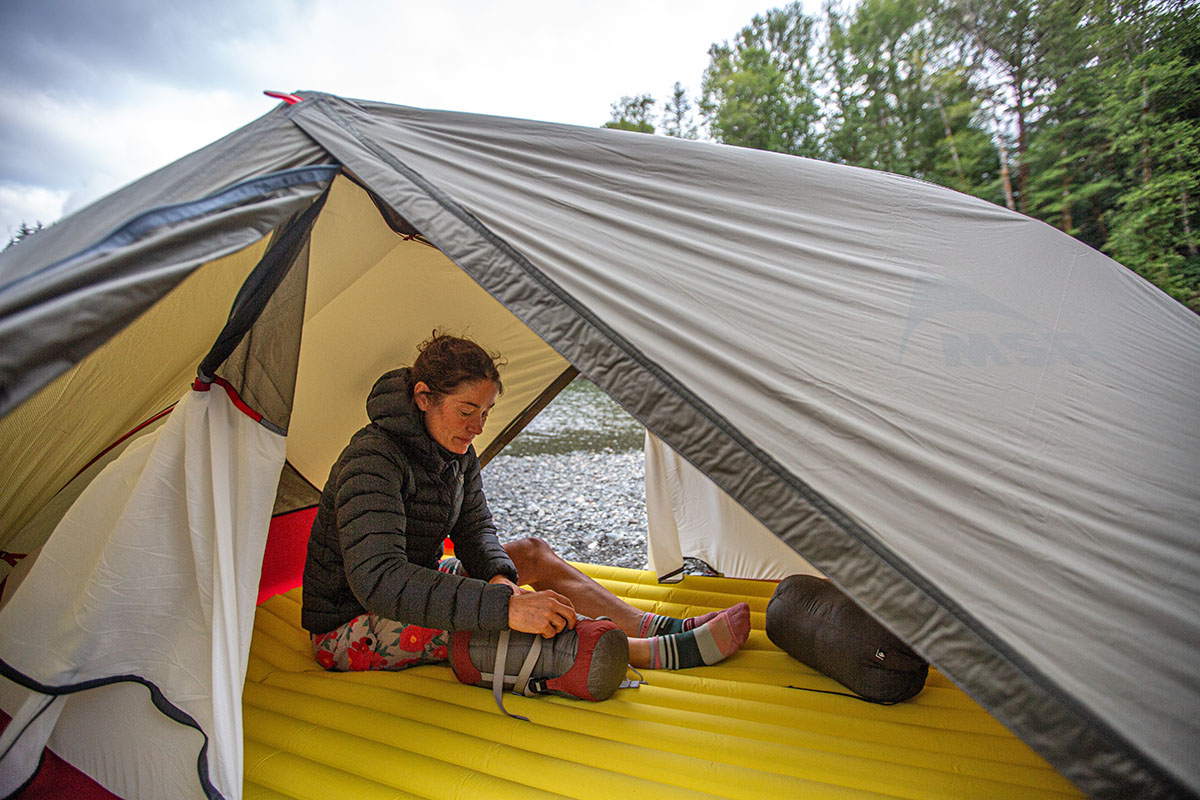
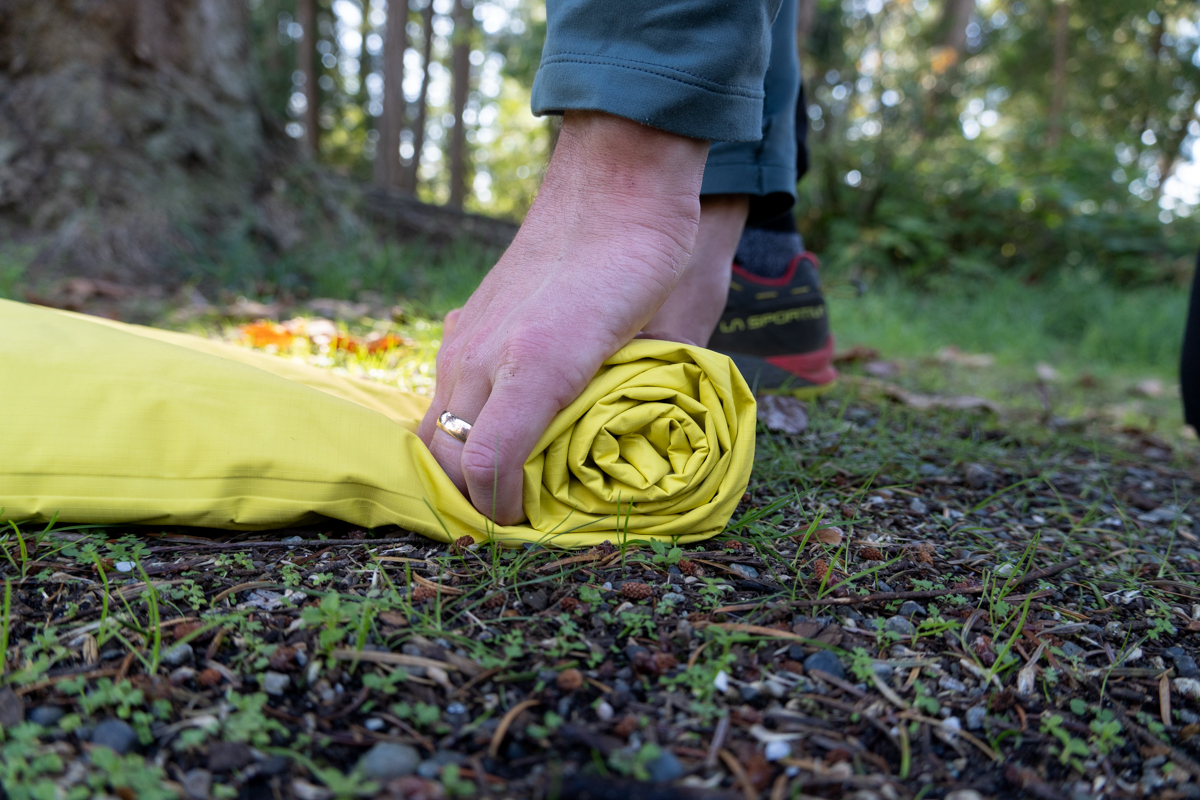
| Sleeping Pad | Price | Dimensions | Weight | R-value | Packed Size |
|---|---|---|---|---|---|
| Big Agnes Divide Insulated | $120 | 72 x 20 x 3.5 in. | 1 lb. 7.0 oz. | 4.0 | 8 x 5 in. |
| Therm-a-Rest NeoAir XLite NTX | $210 | 72 x 20 x 3 in. | 13.0 oz. | 4.5 | 9 x 4.1 in. |
| Nemo Tensor All-Season Ultralight | $200 | 72 x 20 x 3.5 in. | 1 lb. 2.0 oz. | 5.4 | 10 x 4 in. |
| Sea to Summit Ether Light XT | $199 | 72 x 21.5 x 4 in. | 1 lb. 1.3 oz. | 3.2 | 9.5 x 4.5 in. |
| Therm-a-Rest ProLite Plus | $125 | 72 x 20 x 1.5 in. | 1 lb. 7.0 oz. | 3.2 | 11 x 6.8 in. |
*Editor's note: For the sake of comparison, the prices and specs listed above are for the standard/regular version of each pad.
The Divide Insulated is a well-built sleeping pad for the price, but it can't hold a candle to more premium designs like Therm-a-Rest’s NeoAir XLite NXT. Compared to the Big Agnes, the Therm-a-Rest is considerably lighter (13 oz. for the regular size) and more packable to boot. It's also warmer with an R-value of 4.5 and much quicker and easier to inflate and deflate. That said, the NeoAir is a mummy pad, meaning it tapers aggressively at the foot end (Therm-a-Rest does make a rectangular version called the NXT Max, but it's even pricier at $230). While this helps keep things light and compact, comfort seekers and those prone to tossing and turning throughout the night may prefer the rectangular shape of the Divide. The Big Agnes is also 0.5 inches thicker, but the NeoAir is far and away the higher-quality option for committed backpackers willing to make the investment.
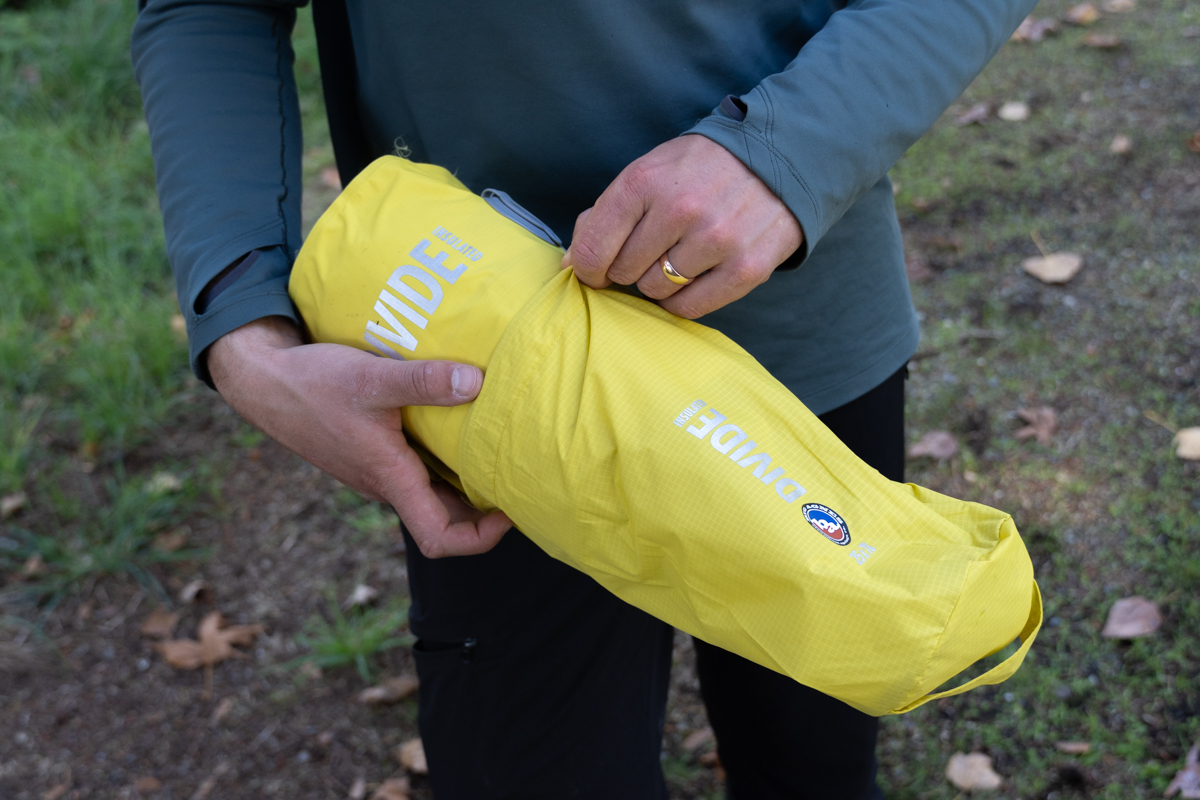
One of my main gripes with the Divide Insulated is that it's difficult to inflate with the included pump sack. By contrast, Nemo’s Tensor All-Season Ultralight Insulated shines with its user-friendly system. Equipped with Nemo's Vortex pump sack, the Tensor inflates efficiently—with just a few gentle blows, the sack captures air and disperses it into the pad as you compress it. The Tensor also gets the edge in weight (1 lb. 2 oz. for the regular, rectangular model) and packability, earning it our vote for multi-day missions into the backcountry. Impressively, the Nemo is also warmer than the Big Agnes with a winter-ready R-value of 5.4, and its boxed baffles offer a more stable surface compared to the Divide's vertical baffles. Whether or not the added investment is worth it is up to you, but we consider the Tensor to be an extremely well-rounded pad at a fair price.
Side sleepers may find the Divide Insulated a little lacking in support (it's easy for hips and shoulders to sink between the baffles), in which case it's worth considering Sea to Summit’s Ether Light XT instead. The Ether Light is equipped with the brand's Air Sprung Cells for a boost in plushness, along with a generous 4 inches of cushioning compared to the Divide's 3.5. You also get Sea to Summit's handy PillowLock system for securing any of the brand's pillows, an upgraded pump sack that makes inflation easy, and the choice between mummy or rectangular shapes (plus a dedicated women's model). Finally, the Sea to Summit is both lighter and more compressible than the Big Agnes, although its 3.2 R-value translates to a drop in warmth. We still consider it the better 3-season pad, especially for side sleepers, but the Divide offers a bump in insulation for around $80 less.
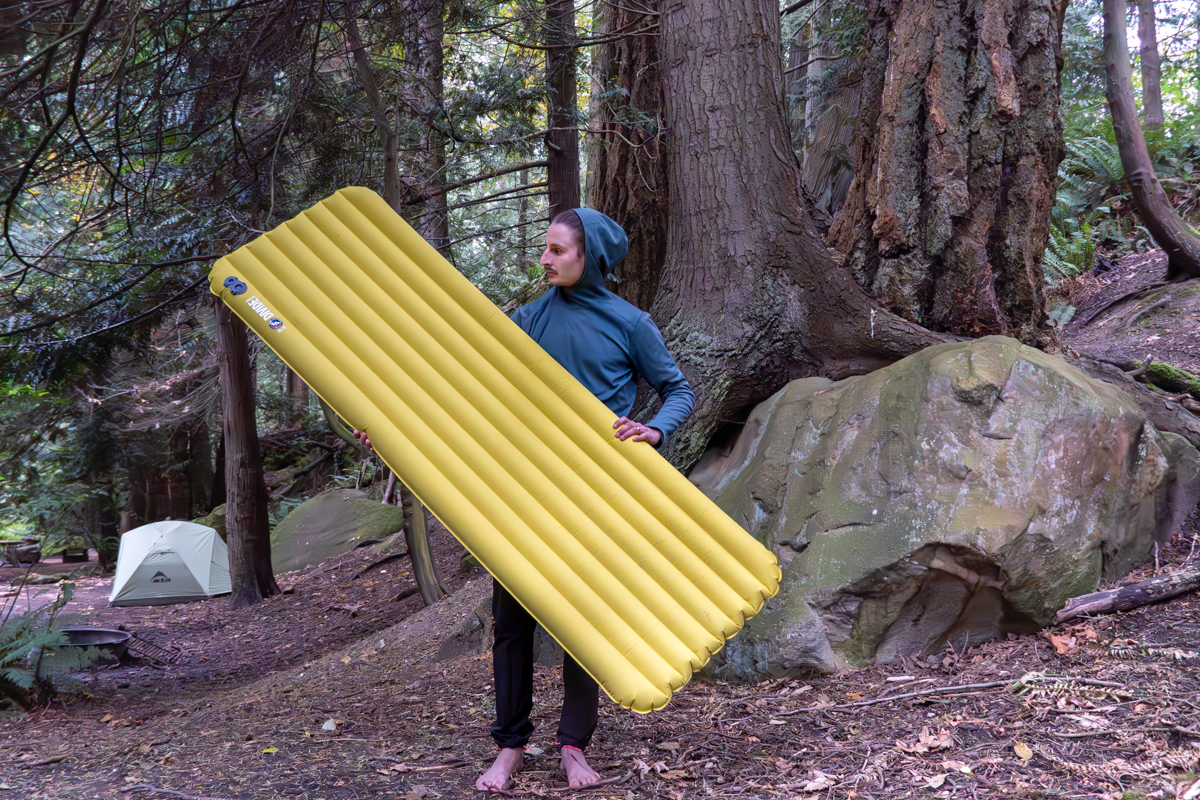
Last but not least is Therm-a-Rest’s ProLite Plus, a self-inflating pad that costs just $5 more than the Divide Insulated. Compared to air pads, self-inflating designs like the ProLite are easier to set up: Simply unroll the pad, open the valve, and give it some time to expand. You may need to use a few breaths to top things off, but it's overall a seamless process. Another benefit is long-term durability: If the pad punctures, the foam inside will still provide some insulation and cushioning from the ground. That said, the ProLite Plus is noticeably thinner at 1.5 inches thick, similarly hefty at 1 pound 7 ounces for the regular mummy version, and still takes up a fair amount of space when packed. In the end, we think most backpackers will be happier with the Divide, but the ProLite Plus eliminates the hassle of manual inflation and provides some added assurance should you encounter a tear in the field.